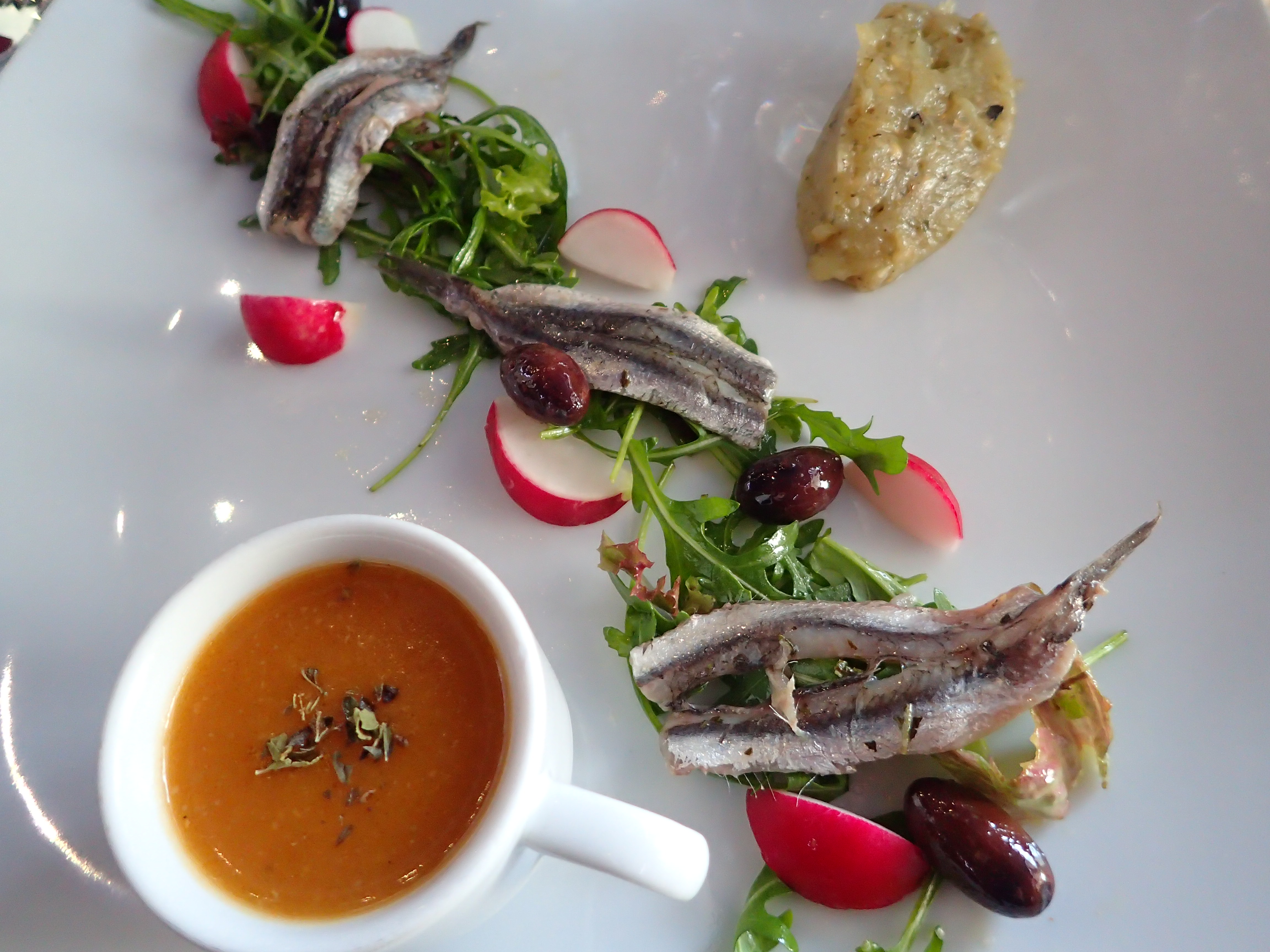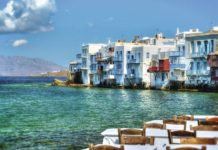Table of Contents
Village Chic
| Our menu, my notebook with notes on Dion and on the wines we are enjoying. |
Modest and Sophisticated

These are perfect together- hot/cold, creamy/crisp, bland/piquant. Pulses here are classically paired with smoked or pickled fish and pickled vegetables as a condiment. Not usually fresh anchovy though. At a couple euroes a kilo, they are cheaper than good white beans. I know- we fry them every Monday, market day in my neighborhood, to have the cheapest and tastiest protein of the week. We eat the bones, if they’re small enough. The house cured ones here are like velvet with some bite- silky plenty of verve.
Our second course is a cabbage roll with mushrooms rather than meat, and cracked wheat rather than the traditional rice. Saffron in the avgolemono sauce is an upscale touch, but it’s local- from a couple of counties over. I’m writing fast, but we’re eating slow, vintners stopping by, some of us table hopping for a chat about the wines, all local, all lovely- the vintners too.
The Most Rustic of Meats
The same theme- a fresh view of the simplest things. A semolina pudding on a toast of tsoureki (like challah) jammy syrup fruits that are part of every traditional Greek pantry, some edible blossoms.
We’re at the table until the shadows outside the window grow long. Litohoro has an unusual arrangement- the main street, which runs straight into Mt. Olympus itself, is lined on the left with cafes and restaurants and on the right beautiful parks and green fields, no buildings but for the town hall. All the open charm of country, and much of the charm of cosmopolitan life. Lefteri, our host from the Chamber of Pieria, invites a small group of us to taste a little more of it. Down the street, his friend is having an art exhibition.
Taste of Rome
We come to Cafe Liagas. It’s elegant without trying. This small mountain village captures the essence of urban chic. It doesn’t seek to impress. Things are simply their authentic best because they like them that way. We drink the best espresso outside of Rome- a hot demi-tasse just half-way full with a thick head of foam. After our fabulous lunch we still manage to share bites of a perfect rich fluffy definitely not modern chocolate pastry.
Vangelis Liagas has great taste- apart from the original art, the sole decoration is a vintage mirror advertising the chocolate everyone grew up eating.
Greece has a genre of sweets called “pastakia”- “pasta” is pastry, “aki” is a suffix that means small. There are lots of different kinds- the best ones have a chocolate shell that cracks a tender yielding cake and fluffy cream filling. We have them at baptisms all the time. Liagas’ are beguiling in their refrigerator case (vintage like the mirror). I get a box to take home- we don’t have any this elegant in the city.
Pieria- region of Mt. Olympus and Dion- is just south of Thessaloniki. It’s easily reached by bus or train, and close enough that I would go for dinner if I were driving (about 45 min). Katerini is the capital and Litohoro is the chic village at the mountain’s base. This site is very useful for planning a visit:
http://visitpieria.gr/english.html
Travel Bloggers Greece and I were guests of the Chamber of Pieria. My enthusiasm is my own- it is a region rich in every delight of Greece.
More pleasures of Pieria-







